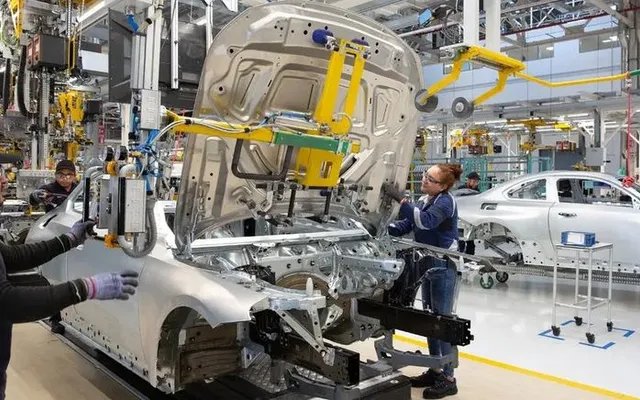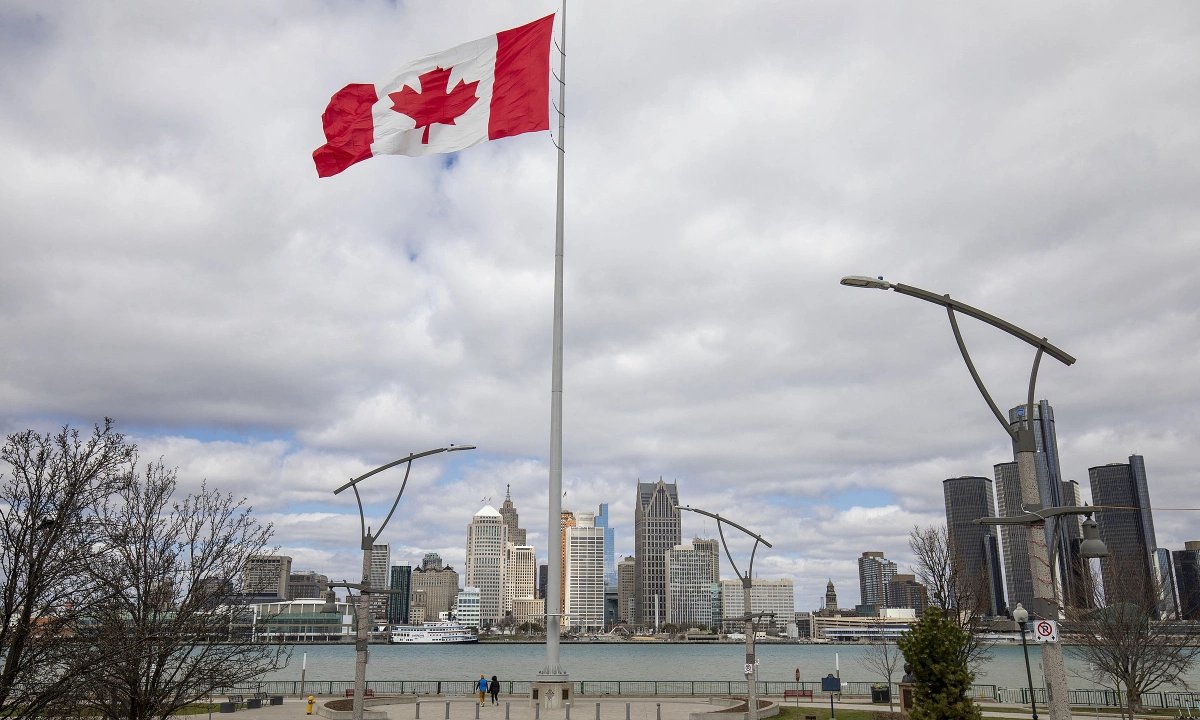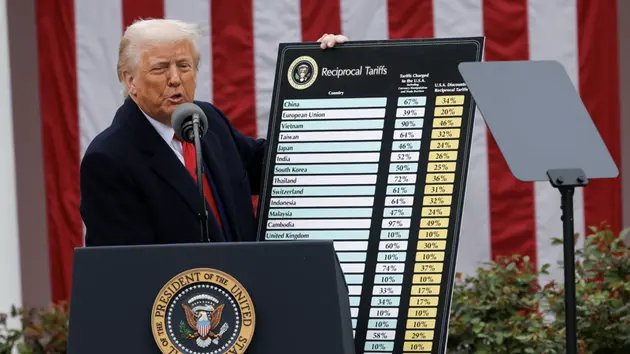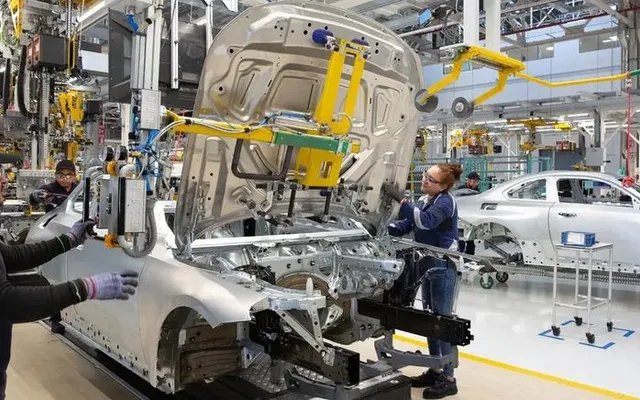Canada’s auto industry capital — long regarded as the engine room of the nation’s manufacturing sector — now finds itself on the brink of a crisis. The recent wave of U.S. tariffs has sent shockwaves across the automotive landscape, threatening livelihoods, crippling supply chains, and shaking the very foundation of Canada’s economic identity. The once-vibrant industrial towns of Ontario, particularly Windsor and Oshawa, are now grappling with a grim new reality: jobs are vanishing, investments are stalling, and confidence in the future is waning.
### The Backbone of Canada’s Automotive Economy

For decades, Canada’s automotive sector has played a pivotal role in shaping the national economy. With a robust network of parts manufacturers, assembly plants, and research facilities, the industry has provided stable employment to hundreds of thousands and contributed billions annually to the country’s GDP.
Ontario, in particular, has stood as the crown jewel of this success. Home to major facilities operated by global giants such as General Motors, Ford, Stellantis, and Honda, the province has benefitted from its geographic proximity to the United States, favorable trade policies, and a skilled workforce. The cross-border integration of the auto supply chain has created a seamless ecosystem — until now.
### The Shockwave of U.S. Tariffs
The turning point came when the United States, citing national security concerns, imposed aggressive tariffs on imported steel and aluminum, followed by targeted measures against foreign-built vehicles and automotive components. These protectionist policies, underpinned by political motivations and a growing wave of economic nationalism, have disrupted the delicate balance of North America’s auto trade.
For Canadian automakers and suppliers, the tariffs are a multi-layered crisis. Increased costs of raw materials, border delays, and the threat of retaliatory measures have eroded profit margins and triggered a domino effect throughout the supply chain. What was once a well-oiled machine is now stuttering under the weight of uncertainty and financial strain.
### Windsor: A City Under Siege

Windsor, Ontario — often dubbed the “Automotive Capital of Canada” — has borne the brunt of the economic fallout. Located directly across the border from Detroit, Windsor has historically been a symbol of cross-border manufacturing harmony. However, the latest tariffs have turned that strength into a vulnerability.
Plants that once operated around the clock are now scaling back production or, in some cases, shutting down entirely. Local suppliers, many of which depend on U.S. contracts, are seeing a sharp decline in orders. Thousands of workers are facing layoffs or reduced hours, with many families now struggling to make ends meet.
The emotional toll is just as severe. For a city whose identity is intertwined with the success of its auto plants, the sense of betrayal is palpable. “We’ve always played by the rules,” said one union leader. “But now we’re paying the price for a political game we didn’t start.”
### Oshawa’s Legacy Under Threat
Oshawa, another cornerstone of Canada’s auto heritage, is also facing an existential crisis. Home to a storied General Motors plant that has been operational for over a century, the town is grappling with dwindling production lines and growing fears of permanent closures.
Though GM has pledged some future investments, they pale in comparison to the jobs and economic output already lost. The city council and labor unions have launched aggressive lobbying campaigns, appealing to both federal and provincial governments for relief, but the larger forces of international trade continue to dictate the narrative.
### Supply Chains in Disarray

The modern auto industry thrives on precision and predictability. A single vehicle may include thousands of parts sourced from dozens of suppliers across the globe. The U.S. tariffs have introduced friction at every juncture — from sourcing raw materials to shipping components across the border.
Many Canadian companies report delays of several days or even weeks at the U.S. border. The increased scrutiny and paperwork have disrupted just-in-time delivery models, causing backlogs in production and unanticipated costs. In a sector where timing is everything, these delays are proving catastrophic.
### Investment on Hold
One of the most damaging long-term effects of the U.S. tariffs is the chilling impact on investment. Auto manufacturers are increasingly reluctant to commit to new projects in Canada, fearing a hostile trade environment and unpredictable policy shifts.
This hesitancy extends beyond automakers. Tech firms, R&D centers, and foreign investors who once saw Canada as a gateway to the North American market are now reconsidering their plans. The result is a slowdown in innovation and a widening gap between Canadian facilities and their global counterparts.
### The Role of the Canadian Government
The Canadian government has responded with a mix of diplomatic engagement and economic countermeasures. Ottawa has imposed retaliatory tariffs on select U.S. goods and initiated trade talks aimed at resolving the dispute. Additionally, federal funds have been allocated to support struggling industries and retrain displaced workers.
However, critics argue that these measures fall short of addressing the structural challenges now facing the auto sector. Temporary relief packages and political promises cannot replace decades-old supply chains or restore investor confidence overnight.
There is growing pressure on Prime Minister and trade officials to adopt a more aggressive stance, including pushing for a North American auto pact that would insulate the sector from political volatility and protect cross-border manufacturing.
### The Human Cost

Behind the statistics and political rhetoric are the stories of ordinary Canadians — assembly line workers, small business owners, truck drivers, and technicians — whose lives have been turned upside down.
Families are relocating in search of new opportunities. Young workers are abandoning plans to join the industry altogether. The dream of stable, high-paying jobs in the automotive sector is quickly fading for an entire generation.
Mental health services in affected communities report a spike in stress-related issues, as financial strain and job insecurity take their toll. Local food banks and community organizations are stretched thin trying to provide support.
### Calls for a North American Automotive Alliance
In response to the crisis, industry leaders and policy analysts have renewed calls for a formal North American Automotive Alliance. Such an agreement would aim to streamline trade regulations, standardize rules of origin, and create a buffer against unilateral trade measures.
Proponents argue that the integration of the U.S., Canadian, and Mexican auto sectors is too deep to ignore. A unified strategy could help protect jobs, foster innovation, and ensure that North America remains competitive on the global stage.
Whether political will exists on all sides remains to be seen, but the urgency is clear. Without structural reforms, Canada’s position in the global auto industry will continue to erode.
### Looking Ahead: Is There a Road to Recovery?
Despite the current gloom, some industry insiders see a path forward. Electric vehicles (EVs) and green manufacturing offer a potential lifeline for Canada’s auto sector. With growing global demand for sustainable transportation, Canadian firms have an opportunity to reposition themselves as leaders in the EV revolution.
Ontario’s mineral resources, such as lithium and cobalt, provide a competitive advantage in battery production. Strategic investments in clean tech and a pivot toward electric mobility could help offset losses and create new opportunities for growth.
But success in this new era will depend on bold policy decisions, renewed international cooperation, and a reinvigorated commitment to industrial resilience.
### Conclusion: A Wake-Up Call for Canada
The wave of U.S. tariffs has served as a brutal wake-up call for Canada’s auto industry. What was once considered a safe and stable pillar of the national economy now teeters on the edge of collapse, undermined by trade wars and shifting geopolitical winds.
Yet, within this crisis lies a chance to rebuild. If Canada can rally its resources, reimagine its place in the global auto landscape, and forge stronger, fairer trade relationships, it may yet reclaim its title as a leader in automotive excellence.
The road ahead is fraught with challenges, but it is not without hope. The future of Canada’s auto industry depends not only on policy but on the resilience and ingenuity of its people — those who have built it, sustained it, and now must fight to save it.
